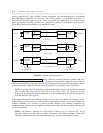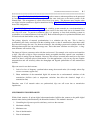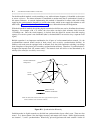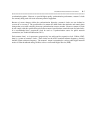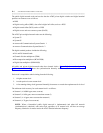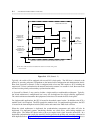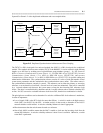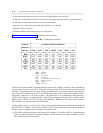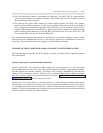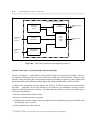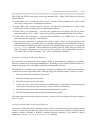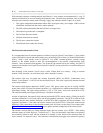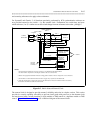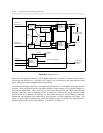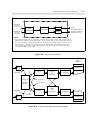B-10 SYNCHRONIZATION OF DIGITAL FACILITIES
_ ___________________________________________________________________________________________________________________________
_ ___________________________________________________________________________________________________________________________
_ ___________________________________________________________________________________________________________________________
• Red alarm means that two out of four (or worse) framing patterns were received.
• Slip rate of selected DS1 facilities (with respect to the primary reference) exceeds a given threshold
• Misframes at the primary reference exceed a given threshold
• Reception of a yellow alarm (or a blue alarm for R2V4, 1.1 and later)
• Health of SCS circuit pack
• Insane condition of the board processor on a DS1 circuit
Table B-1, SCS References Switches, summarizes these conditions:
Table B-1. SCS References Switches
_ _________________________________________________________________
Primary Secondary Reference Indicators
Reference
_ _____________________________________________________
Indicators RED BLUE YEL GOOD LOS MISF BO
_ _________________________________________________________________
_ _________________________________________________________________
RED HAC HAC SEC SEC HAC SEC HAC
_ _________________________________________________________________
BLUE HAC HAC SEC SEC HAC SEC HAC
_ _________________________________________________________________
YEL PRI PRI PRI SEC PRI PRI PRI
_ _________________________________________________________________
GOOD PRI PRI PRI PRI PRI PRI PRI
_ _________________________________________________________________
LOS HAC HAC SEC SEC HAC SEC HAC
_ _________________________________________________________________
MISF PRI PRI SEC SEC PRI PRI PRI
_ _________________________________________________________________
BO HAC HAC SEC SEC HAC SEC HAC
_ _________________________________________________________________
BLUE Blue alarm
RED Red alarm
YEL Yellow alarm
LOS Loss of signal
HAC System 85’s internal high-accuracy clock
BO Maintenance busied out
MISF Misframe
GOOD No alarms
The SCS circuit pack’s health is examined when the system clock’s health is evaluated. Error conditions of
varying severity can exist on the SCS. If the fault is minor and the SCS can still lock on the current DS1
reference, a low-priority request for a soft switch to the offline side is made after an unsuccessful attempt to
clear up the error condition on the SCS. If the SCS cannot lock onto the current DS1 reference clock, a
high-priority request for a soft switch is made. The offline SCS is also monitored to make sure that a
switch is not attempted to an unhealthy SCS. If the SCS is not duplicated and the HAC is healthy, serious
failures cause a switch to the HAC to ensure switch reliability. When the SCS can once more lock onto a
DS1 reference, a switch to that reference is performed.
Synchronization occurs at several priority levels; records are kept for perusal at the demand test level with
procedure 625. In addition, several yellow LEDs on the SCS can be observed to get a current picture of
how the system is configured from a reference clock point of view.
• The LED in position #4 refers to the primary DS1 reference. The LED is OFF if a synchronization
signal is present and the SCS is capable of locking. The #4 LED is ON if an error condition exists and
the synchronization cable is present.



